On 23rd May 2019, the most awaited results of the 2019 Lok Sabha elections were announced. NDA surprised the entire nation by winning 352 out of the 543 seats, where BJP alone bagged 303 seats. It was undoubtedly the most polarizing election result in the history of Indian elections. So, we thought why not do an election results comparison using data from both 2014 and 2019 lok sabha elections. Hope you enjoy the insights.
The Power of Grass-root Democracy
One interesting thing which we learned was that out of 485 (89.48 %) constituencies, 543 belong to the rural and semi-urban areas, 343 being the number for rural constituencies. It represents the strength of grassroot democracy and awareness in people to vote. Table Below provides the party-wise detailed distribution of the constituencies across India after elections.
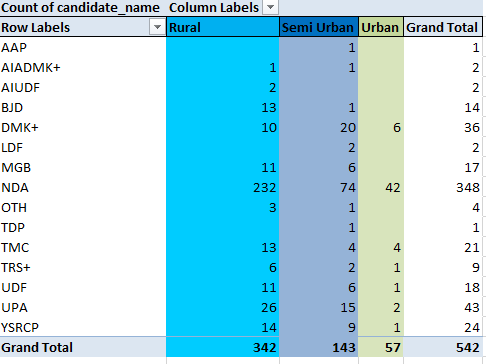
2014 vs 2019: Election result comparison for performance of parties
Now, let’s compare the big picture. Below are the charts visualizing the division of the 542 seats among different parties in 2014 and 2019 Lok Sabha elections.
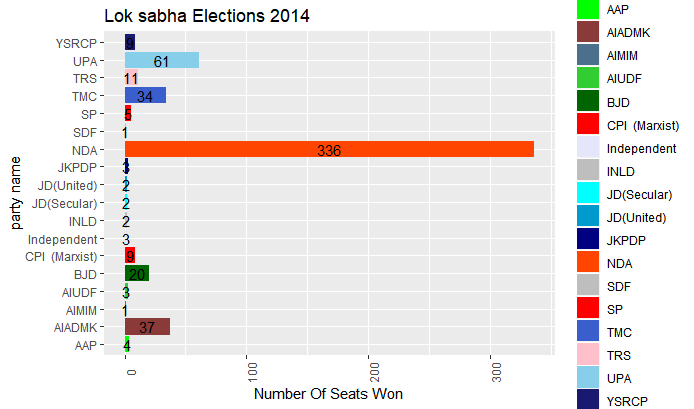
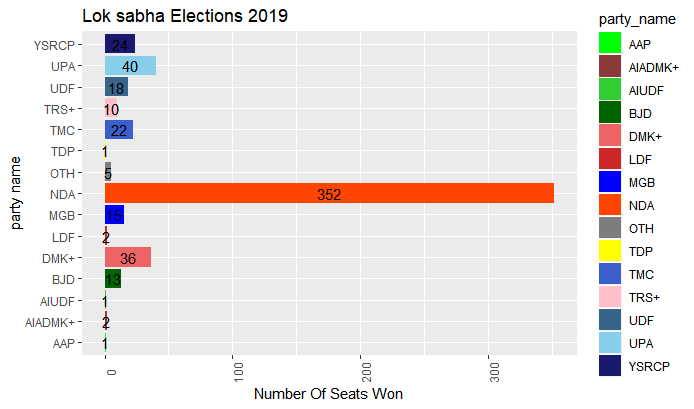
How India Voted from Every Region
Insights from elections data are always interesting to storify. Let’s go a little deep and see how different regions of the country have voted in 2019 compared to 2014.
Election Wave in the North
This Year Mahagatbandhan (MGB), an anti-congress and anti-BJP alliance, was formed under the leadership of BSP leader Mayawati and SP president Akhilesh Yadav along with other regional parties from various states.
- As is evident from the plots above, NDA’s performance in both 2014 and 2019 has been more or less similar. Specifically, in Uttarakhand and Himachal Pradesh, NDA retained the same number of seats in 2019 as in 2014.
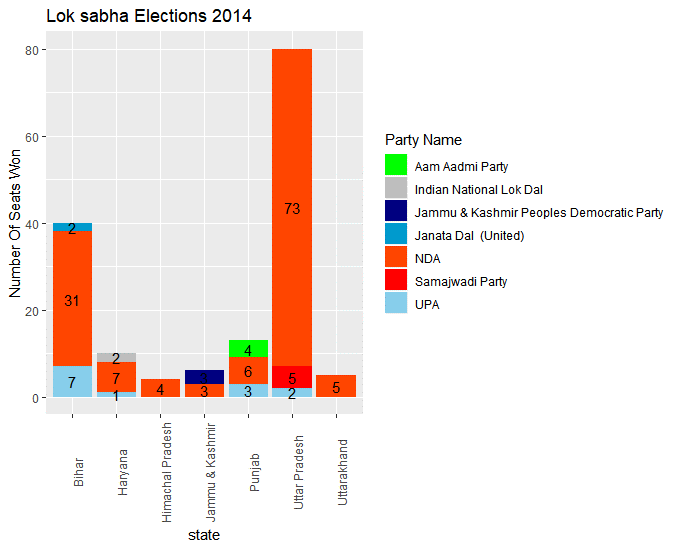
- In Haryana, NDA bagged all the seats this year increasing its tally from 7 to 10.
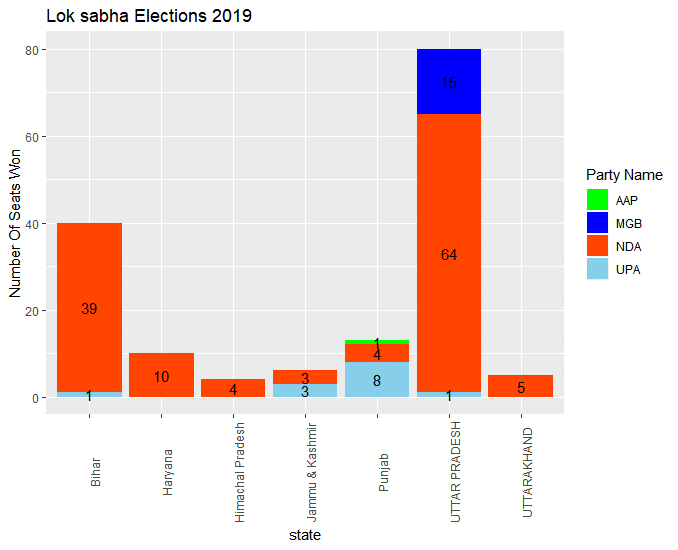
- Similar is the case in Jammu and Kashmir.
- In Bihar, NDA won 39 seats this year compared to the 31 seats it had won last time. One important point to be noted here is that the Janata Dal (United) was not the part of NDA alliance in 2014. They chose to join the alliance in 2019.
- In Uttar Pradesh, it seemed Mahagatbandhan (MGB) alliance of regional parties would deter Modi Juggernaut, but could only manage to win a few seats against NDA. It brought down NDA’s tally from 73 seats to 64 this year.
- In Punjab, the positive sentiment for AAP seems to have died down, which is evident from the fact that tally of AAP has come down to 1 from 4 seats in 2014.
Central India Making an Impact
Here’s a close look at the performance of the parties across the central-India States during 2014 and 2019 general elections.
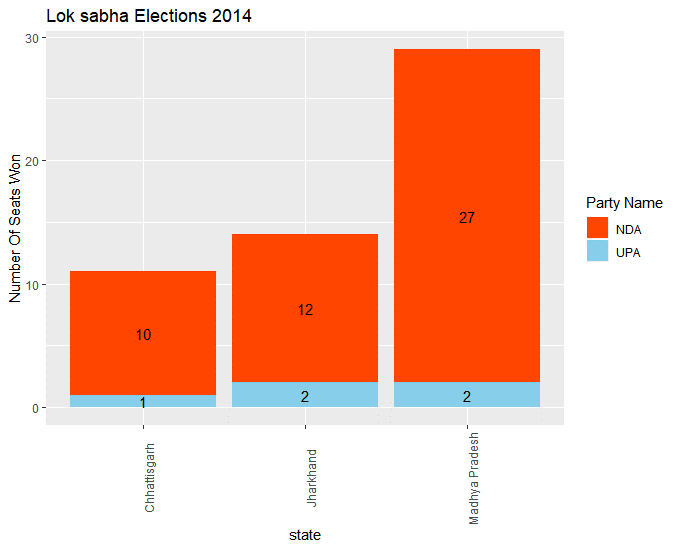
One interesting aspect of these 3 states is that there are no major regional players apart from BJP and Congress.
However, in Jharkhand, the regional party JMM (Jharkhand Mukti Morcha) is in alliance with UPA. It bagged 2 sets in 2014 and also managed to win the same in this year’s election. Overall the performance of the parties this year has been more or less similar to that of 2014.

Here’s How the West Reacted this General Elections 2019
Here are the major players from the western part of India.
The only change here we see is in the state of Maharashtra where we have AIMIM party. It managed to win from Aurangabad constituency bringing down NDA’s tally to 41 from 42 in 2014.


Dominance in North-East
Sikkim is the only state where BJP and Congress could not make inroads. Regional parties Sikkim Krantikari Morcha (SKM) and Sikkim Democratic Front are the prominent players in this state.
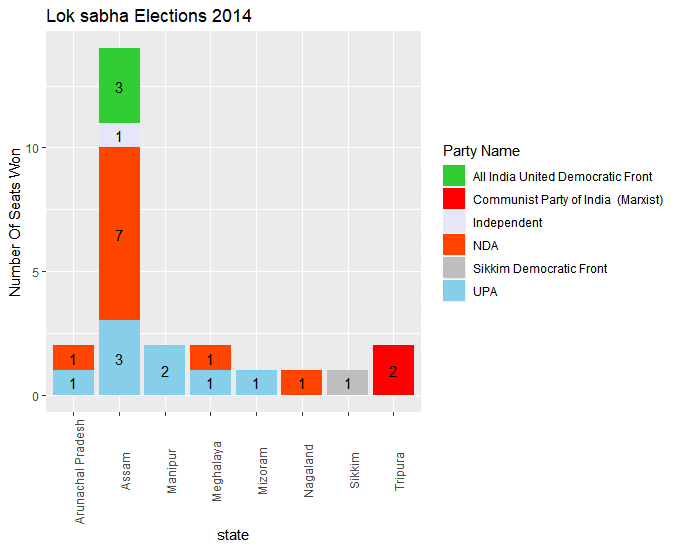
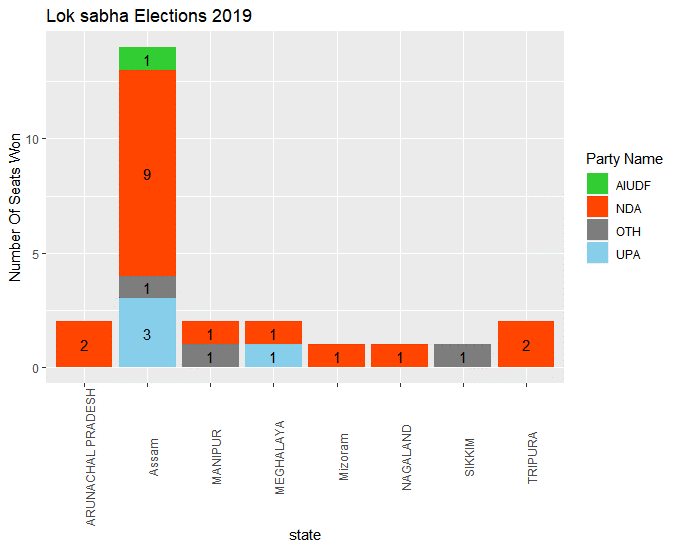
A quick overview of the plots would reveal that NDA has increased its seats share in the Northeast. Let’s have a look at each state in detail.
- Except for Nagaland and Meghalaya, rest all the states in the northeast have witnessed change compared to the 2014 elections.
- In Sikkim, the winning party in 2014 was Sikkim Democratic Front. However, this year it’s Sikkim Krantikari Morcha.
- In Manipur, NDA managed to win one seat. An interesting fact to be noted here is that from 2004 until 2014 there was no presence of NDA in Manipur.
- It was CPI (Marxist ) that had won all the 2 seats in Tripura back in 2014. This time its NDA.
- In Manipur, it’s one each to NDA and UPA and It’s a switch from UPA to NDA in Mizoram. In Assam, NDA increased its tally from 7 to 9 whereas AIUDF lost 2.
Insights from Eastern Region Election Results
Let’s now have a look at election results comparison for Odisha and West Bengal. Here are the parties that have been dominant players and further analyze the performances.
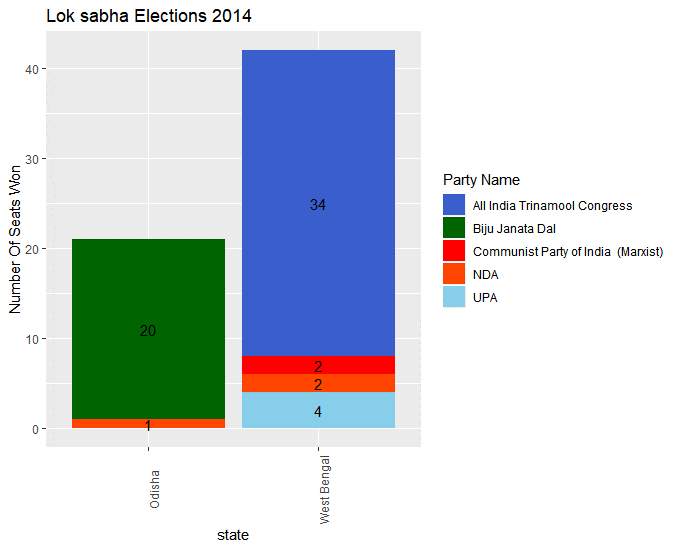
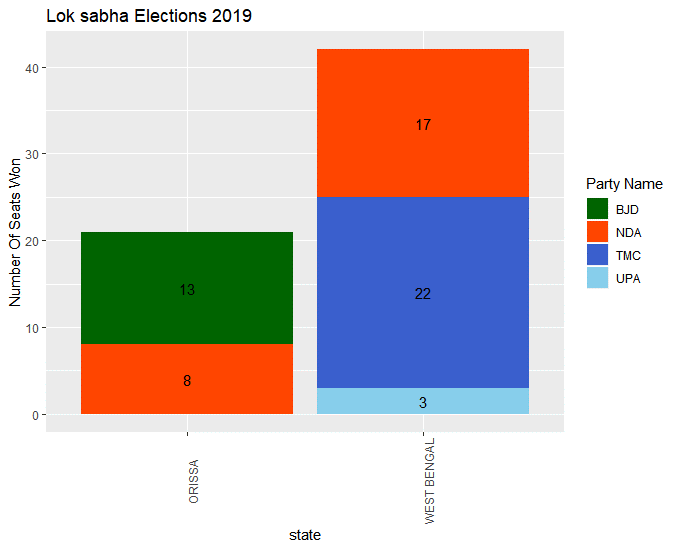
Once again we see NDA has improved its tally to a great extent in both the states in this election compared to 2014. Especially in these 2 eastern states, it’s the regional parties that have been prominent players.
In This Year’s election, NDA managed to put up a good fight against the regional parties in Odisha as well as West Bengal and thereby witnessed an exponential increase in its seat share compared to 2014.
In West Bengal it’s a shock for the chief minister and TMC leader Mamata Banerjee–The vote bank of the Left parties seems to have shifted en masse to the BJP, CPI’s tally went down from 2 to 0 this time.
The South Wall of India
In undivided Andhra Pradesh, during 2014 elections, there were 42 Loksabha constituencies. They now have been divided into 25 and 17 between Andhra Pradesh and Telangana respectively.

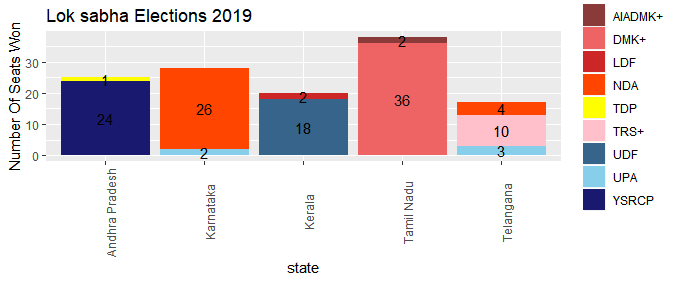
Out of the 42 seats, NDA had won 19 out of which 16 went to TDP and BJP had won 3, 11 went to TRS followed by Jangan’s YSRCP which won 9 and Asaduddin Owaisi’s All India Majlis-e-Ittehadul Muslimeen (AIMIM) won 1 seat.
In this year’s election surprisingly Jagan’s YSRCP swept entire Andhra Pradesh winning in 24 out of the 25 constituencies, while TDP could manage only 1. Out of the 17 constituencies in Telangana, All India Majlis-e-Ittehadul Muslimeen (AIMIM) and Telangana Rashtra Samithi (TRS) Alliance won 10 seats compared to 12 in 2014 elections, while BJP and Congress won 4 and 3 respectively.
The end of marathon 7-phase elections with Union Territories
Finally, let’s have a look at The Union Territories and find out how the political parties have been performing in these territories.
BJP and Congress are the only dominant political parties in the union territories.
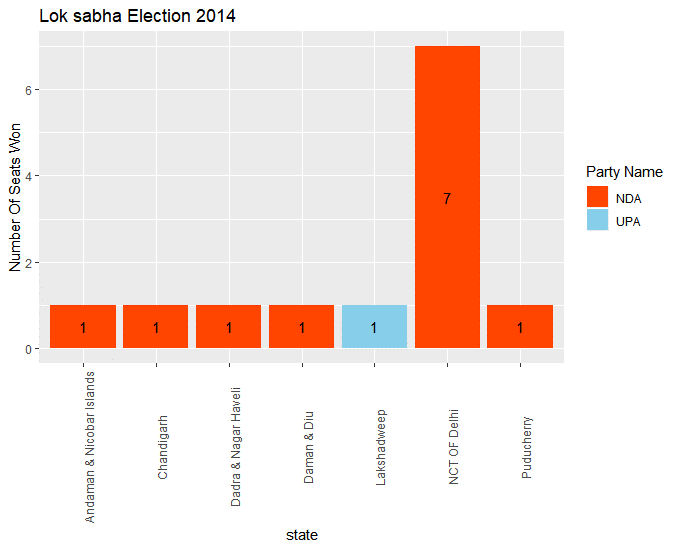

The narrative in union territories seems to be different from the rest of India, while BJP has increased its seat share in the rest of India, It did not perform the same in the Union territories.
So, that was a complete analysis of all the regions in India. Election results comparison brings a plethora of stories. Some discovered, some still to be. If you have an interesting insight to share, please comment down or mail us at Marketing@gramener.com.
Note: The election results comparison analysis for 2019 and 2014 terms is done, storified, and published by Prashant Kumar A. from Gramener.